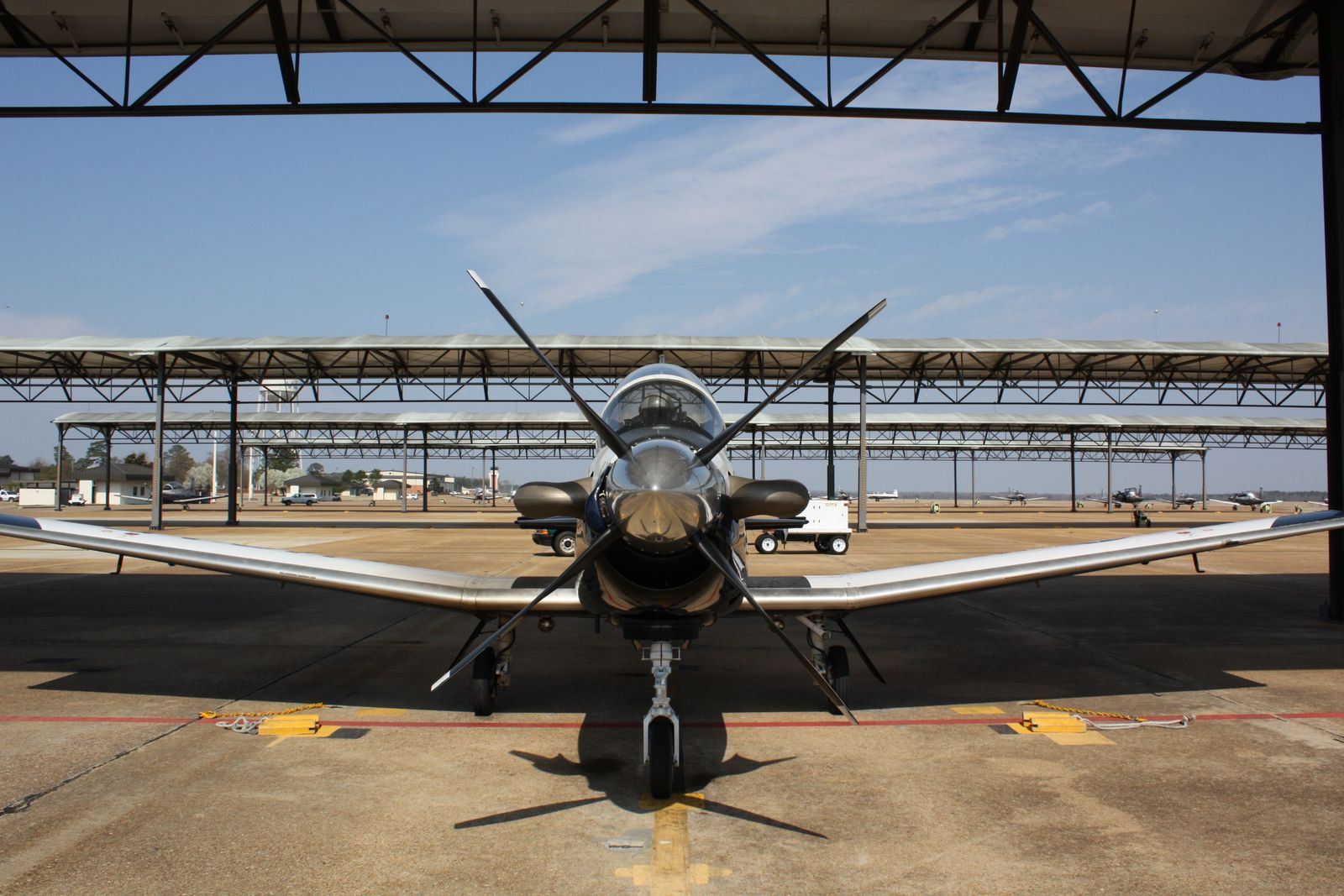|
|
|
Phase II: The T-6 Texan II |
| And now the flying can begin. Students entire the flight line after just a short 5 weeks of academics and prepare themselves for 6 months of flying the mighty T-6 Texan II. This phase of training is one of the hardest since the students will being to learn the basics of VFR flying, aerobatics, instrument flying, navigating off-station, low level flying and formation. Certain areas of training are given more emphasis than others but all are graded none-the-less. Students first start with simple tasks like patterns and landing and will then progress to aerobatics and high-G maneuvering. From there, they will enter the formation and instrument phases of T-6 training and learn the basics of formation flying, the importance of having a wingman and how to fly an instrument approach if in the weather and unable to navigate visually. After this, students generally go cross-country and fly off-station sorties to familiarize themselves with how to navigate in strange environments. Over 100 combined simulator and flight missions will be accomplished in this phase and students will get to go solo in the aircraft at least 5 times for over 5 hours total, including a formaion solo. |
During each category of training mentioned above, students will be graded daily and on check-rides. These category "checks" weigh heavily on their overall performance score. It is dificult to explain but students have a combined score based upon their checkride performance, daily performance, academic performance and their overall military bearing (this part is subjective). Each one is weighed differently and a total rank is associated with each student compared to his classmates. There are usually 25-30 students in a class so someone will be number 1 and unfortunately someone has to be 30. This is important because how well people perform in stage II will dictate what aircraft they will fly in phase III. If you wish to ever fly a fighter or bomber aircraft, you must be selected to the T-38C, but only so many slots are available. To fly a tanker or heavy type aircraft, you will go on and fly the T-1 Jayhawk. And if you wish to fly helicopters, you will be sent to Fort Rucker in Alabama to fly the UH-1. There are no guarantees on how many of each aircraft there will be for the students, but by placing yourself at the top of the class you will get first pick and so-on so it behooves you to try your best every day and let the chips fall where they may.
|
 |